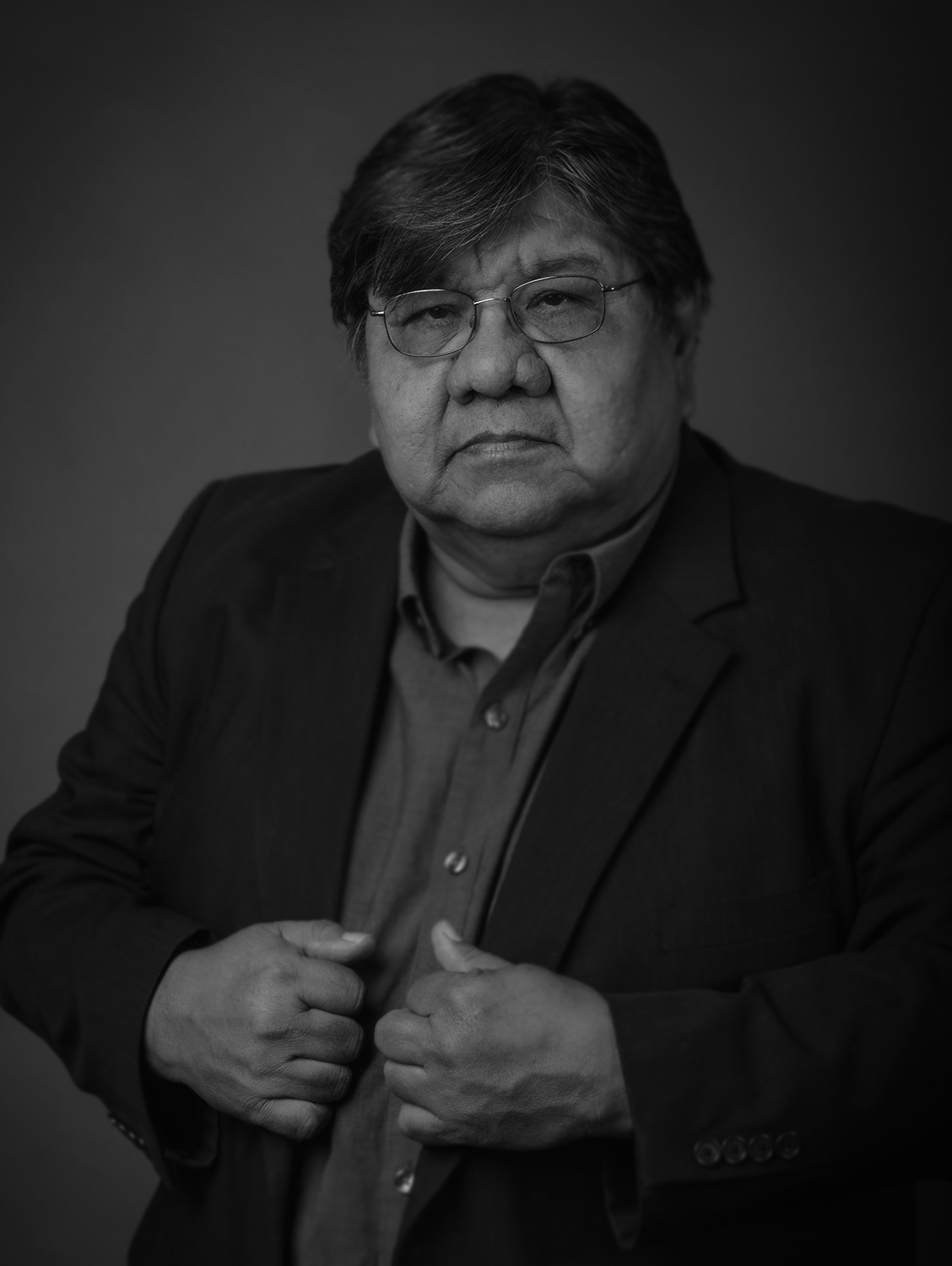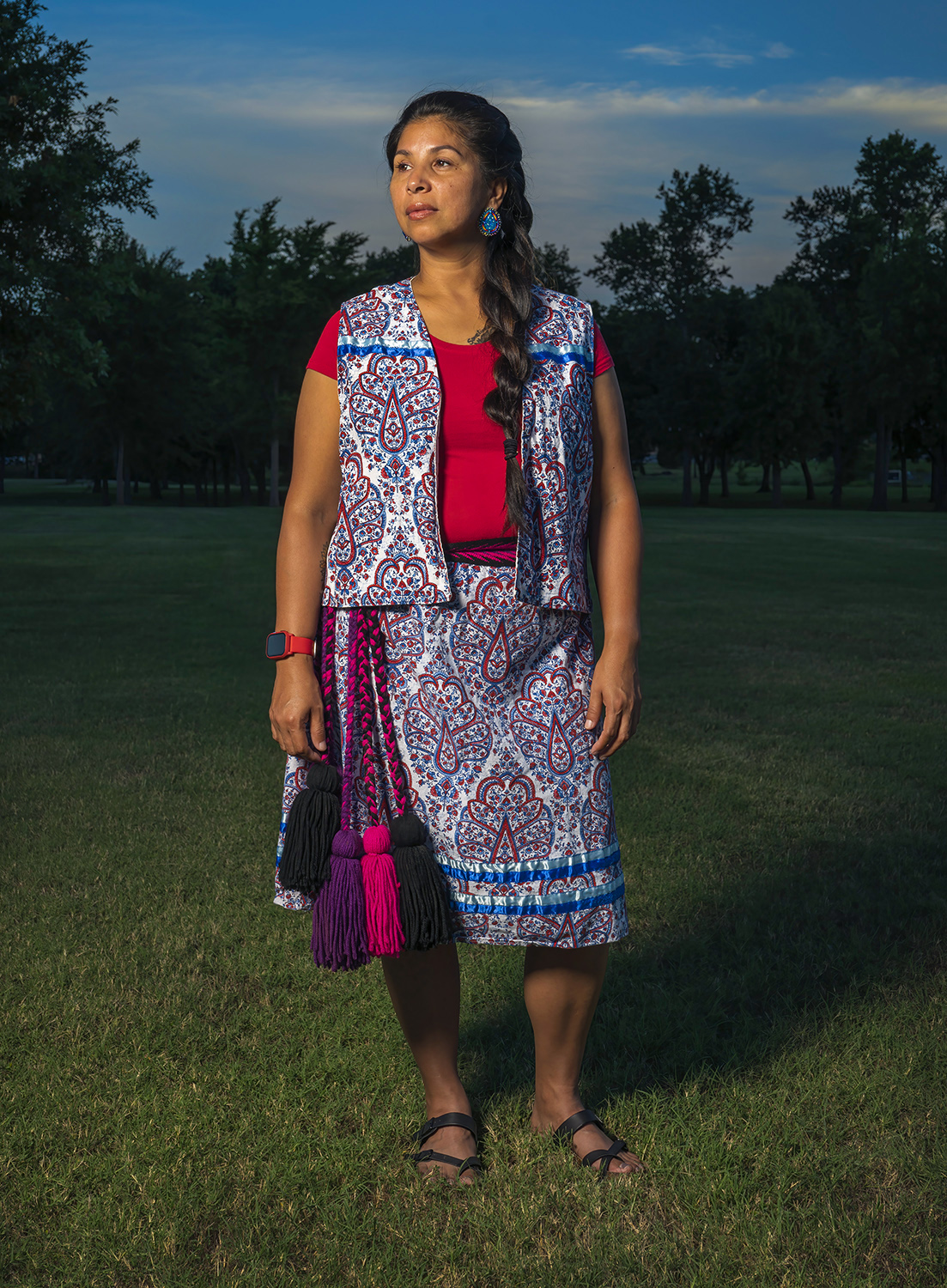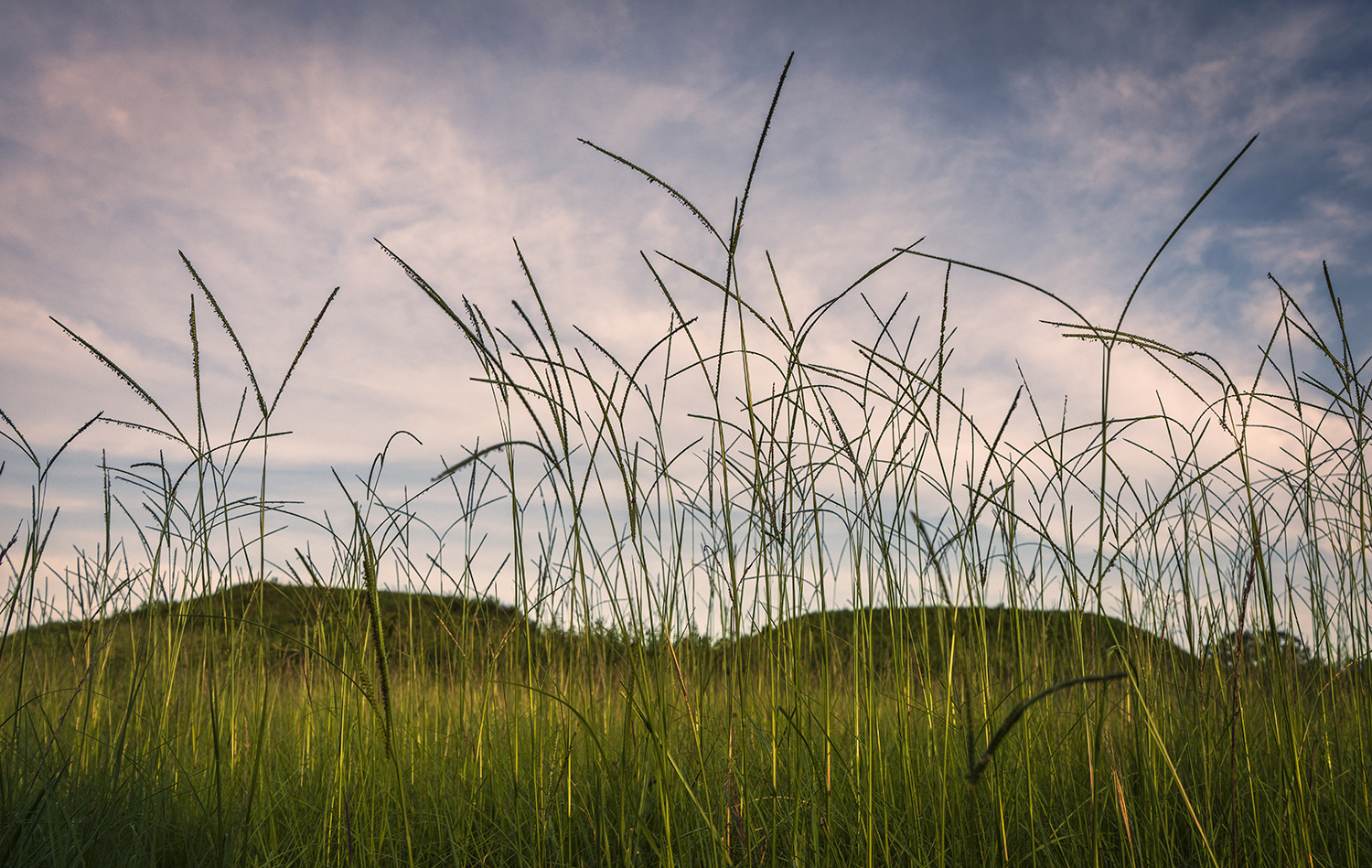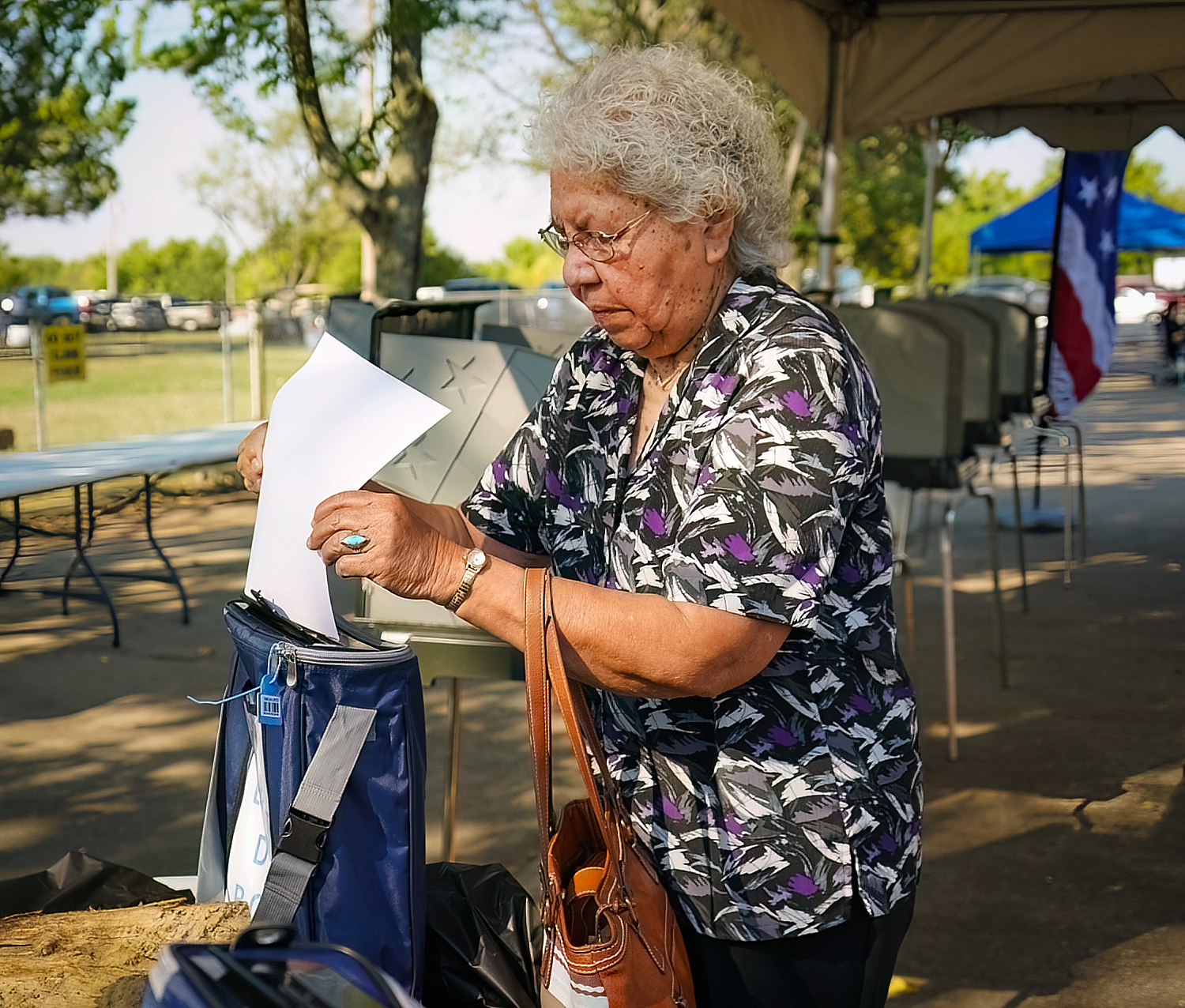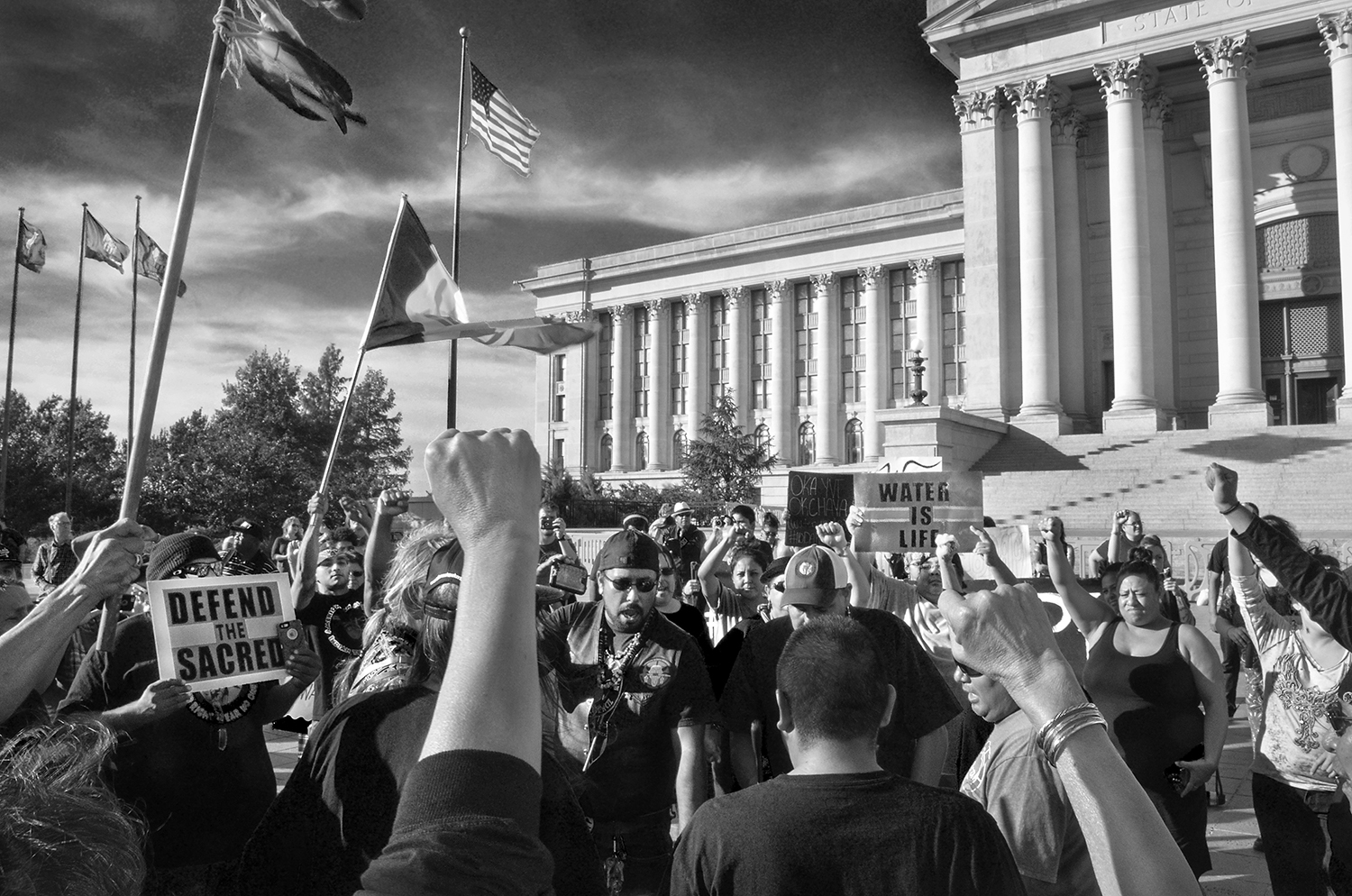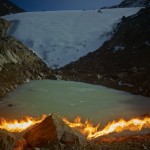Indigenous Photographers Week: Tom Fields
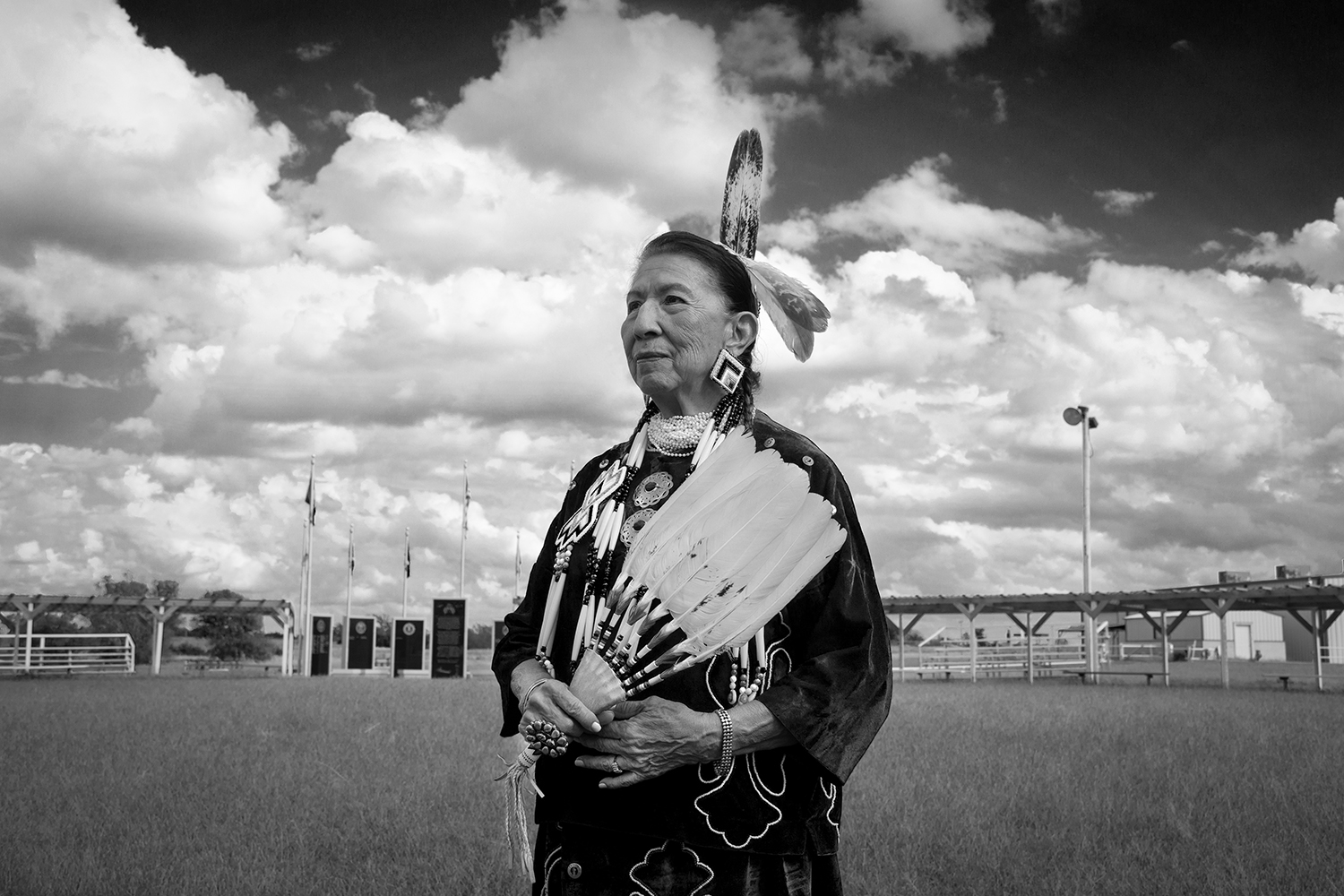
©Tom Fields, Culture Bearer, Joyce “Hoh Tin Ee Mi” Big Soldier, Iowa tribal elder, stands in the dance arena. Perkins OK. 2019
This week Lenscratch celebrates Native American Heritage Month with a week featuring the amazing lens-based work of Indigenous artists. We аre kicking off this celebration with the work of Tom Fields, who is an Interpretive Documentary Photographer.
“Photography has opened a door for me to explore the world,” says Fields, “It’s a cultural journey that continually becomes a new and dynamic adventure.” Fields was born in Tahlequah, Oklahoma, and is a member of the Cherokee and Muscogee Creek tribes; he attended film school in Santa Fe, New Mexico, studied art at Northeastern State University, and worked / studied photography in Tulsa, OK.
Born in Tahlequah, Oklahoma, and a member of the Cherokee and Muscogee Creek tribes, Fields attended film school in Santa Fe, New Mexico, studied art at Northeastern State University, and mentored with a photography in Tulsa.
He developed an early interest in photography while looking through old family photo albums. The timeliness and graphic nature of those black-and-white images seemed to beckon him toward the medium, beginning his passion for photography.
In 1979 two of his photographs were accepted in Tulsa’s Philbrook Museums Annual Indian Art show. These were the first photographs ever exhibited in the show. At that time, photography was not considered a serious “Indian Art” medium. Fortunately, that has changed over the years.
Fields has participated in several photography exhibits, such as group shows in Los Angeles, Santa Fe, and Minneapolis and a man show at the Native and Inuit Photographers Gallery in Hamilton, Ontario, Canada. He participated in a thematic residency at Banff Art Center in Banff. He had a photography exhibit at the Oklahoma State Capitol titled “Nativescapes” A View From the Interior.” and has also participated in a group show at the New Orleans Museum of Art titled “The Art of Caring.”
His surroundings and community most influence his work. “I’ve learned to photograph what’s close to me, physically and spiritually,” and he feels his best work is when working within these themes. ” I like to photograph close to the moment; I want the viewer to feel and see what I experience.”
Fields now devotes much of his time to personal projects and digitizing his archive of film negatives dating back several decades.
Follow Tom Fields on Instagram @tjfields49/
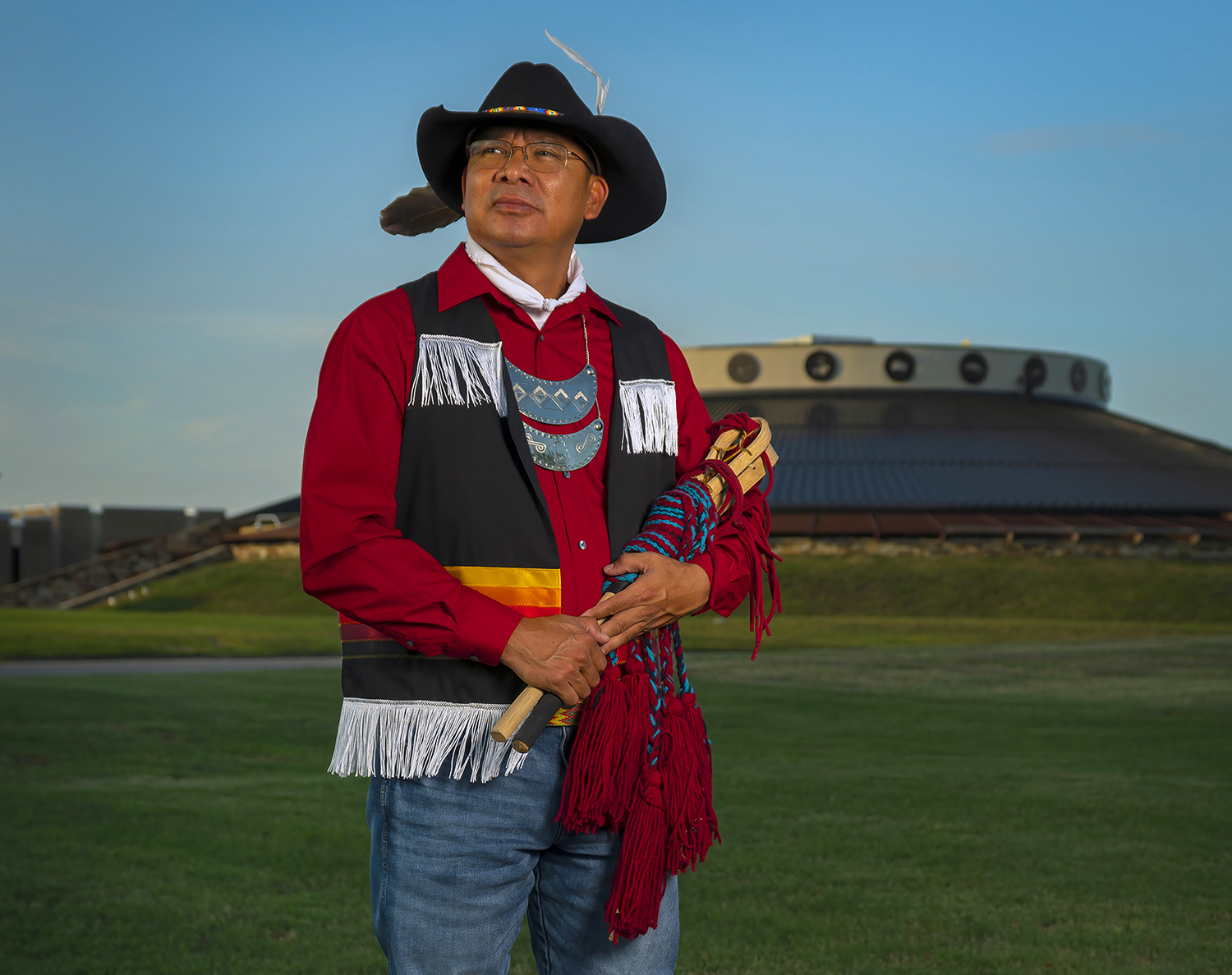
©Tom Fields, I’m Still Here, Alive and Present, Muscogee Creek Councilman Galen Cloud holding his Ball-Sticks, yarn belt, and felt necklace. Muscogee Creek Mound Building, Okmulgee, OK 2022
Artist Statement
I photograph to tell a concise and fluent story – each image is a frame within a larger narrative. My interpretation of that story is the precise moment I capture an image.
There are various levels of photography in which I work. I may create images with the sole purpose of having a photographic record of that time. I may look for moments when people interact and share culture, or I may make a portrait of a person. My approach depends upon motivation, purpose, and vision.
Photography is also a way for me to visually define what it means to be Native. I seek individual uniqueness and the spirit of the moment as I create images that reflect dignity and hope within a contemporary world.
To accurately portray Native people, one must understand the soul of what makes us persevere. It’s being able to experience the depth of our culture, which is more than just artifacts, art, or dance. It’s the everyday movements of life, such as dinners, adoptions, namings, births, graduations, and spiritual ceremonies.
Photographers work differently from other artists. Their chosen calling requires them to be more than passive observers of an event. For my work, I try to photograph close to the action to capture the envisioned moment and experience.
The relationship between photographer and subject ultimately brings the photograph to life. The critical balance between intrusion and respectful observance, objective reality and subjective vision, and emotional commitment create the power of the interpretive documentary image.
Early in my photography career, I learned to explore what was close to my heart. I photograph the people and communities I am part of. Many people I have photographed have passed on to the spirit world. I am thankful to have met them and have a record of their legacy. –
Tom Fields
Cherokee/Muscogee Creek
Interpretive Documentary Photographer
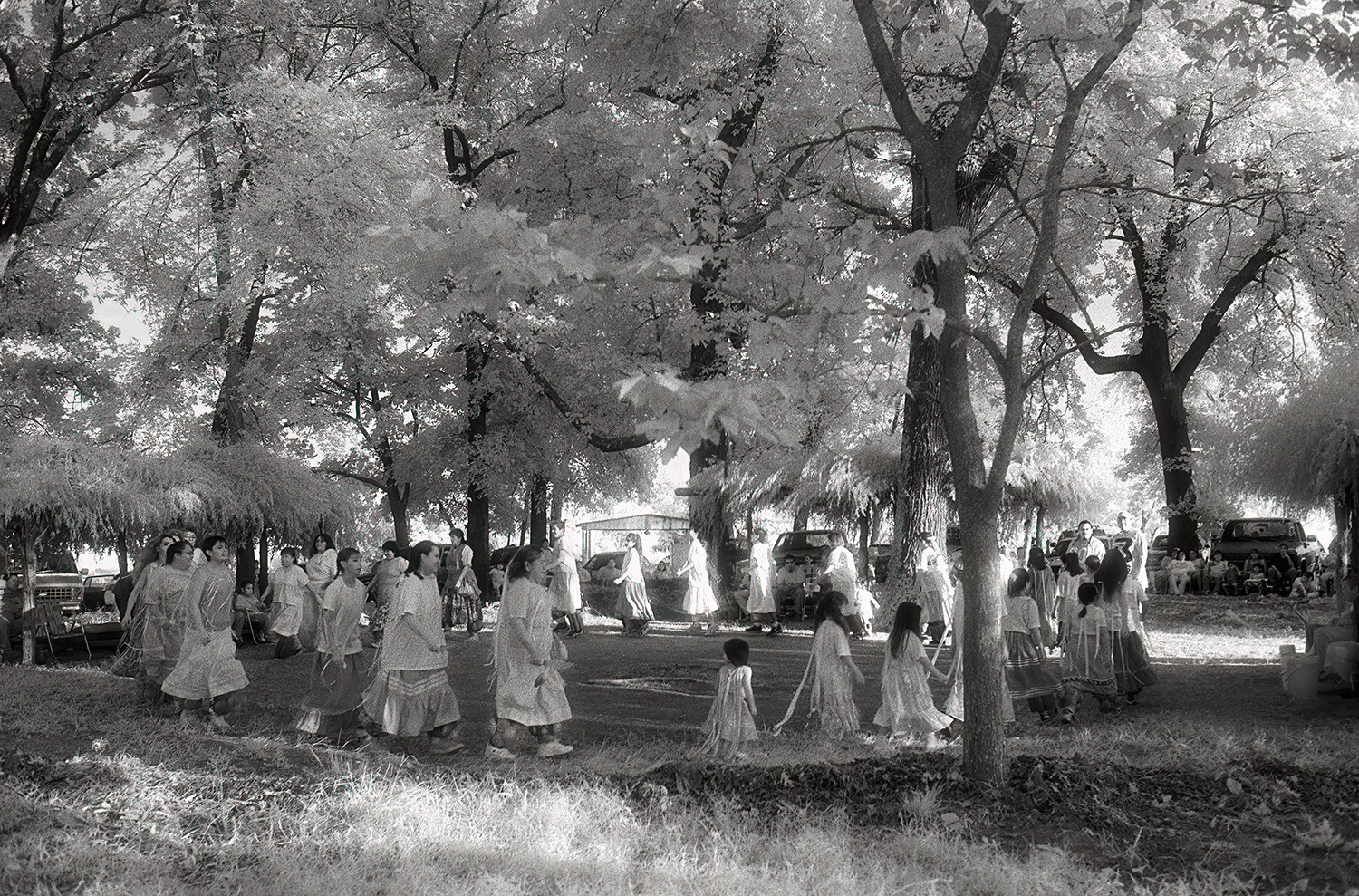
©Tom Fields, Dancing in the Sunlight, : The Muscogee Creek Ribbon Dance, a women’s dance, is held before the Green Corn Ceremony. The dance is named for the ribbons worn by the women. Terrapin shells filled with small pebbles are worn around the ankles to create the sound and rhythm. Muscogee Creek Tribal town. 1999
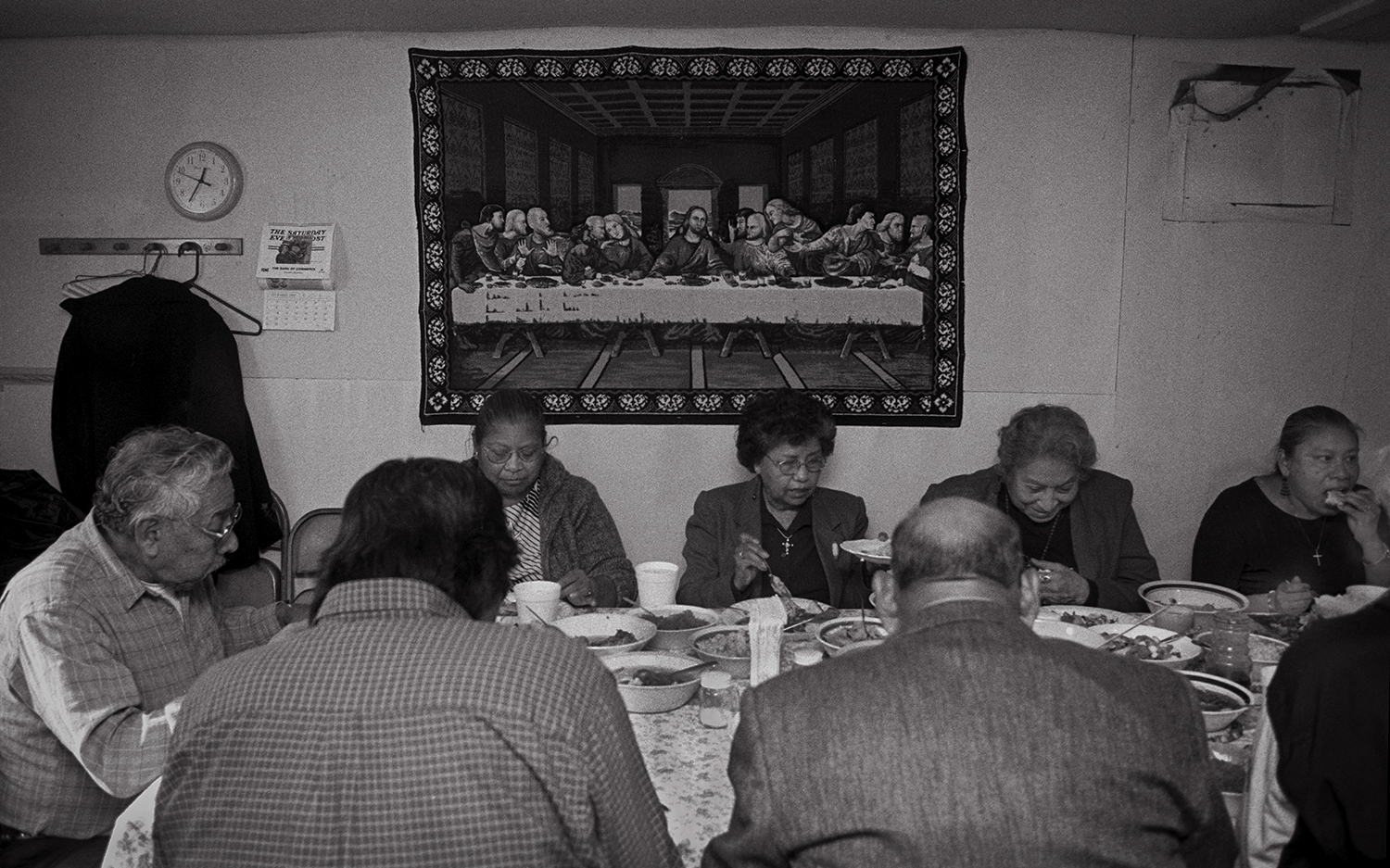
©Tom Fields, The Noon Dinner, Visitors to Alabama Quarsarty Indian Church eat dinner at a family camp house. During the Sunday meetings, the owners of the camps serve dinner and supper to all the visitors. E. of Wetumka, OK. 2002
Posts on Lenscratch may not be reproduced without the permission of the Lenscratch staff and the photographer.
Recommended
-
Earth Week: Simon Norfolk: When I am Laid in EarthApril 27th, 2024
-
Shinichiro Nagasawa: The Bonin IslandersApril 2nd, 2024
-
The International Women in Photo Association Awards: Lorraine Turci: The Resilience of the CrowMarch 16th, 2024
-
The International Women in Photo Association Awards: Rayito Flores Pelcastre: Chirping of CricketsMarch 14th, 2024
-
The International Women in Photo Association Awards: Louise Amelie: What Does Migration Mean for those who Stay BehindMarch 12th, 2024

